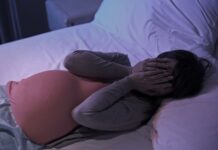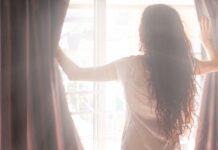Many individuals with depression are unwilling or unable to take medication or have found it ineffective. Bright light therapy box is now established as a treatment for both seasonal (fall-winter) depression, as well as several forms of non-seasonal depression or sad, including bipolar depression.
Here is an overview of the science:
Recent overviews – “meta-analyses” – of clinical trials have concluded:
- In Seasonal Affective Disorder, light therapy is superior to placebo
- A review of 23 studies with 1120 non-seasonal depressed patients demonstrated that light therapy is significantly more effective than comparative treatments
- A comparison of light therapy versus antidepressant drugs, and the combination versus light therapy alone, showed no difference between light and drugs but a clear superiority of the combination
- Light therapy has rapid antidepressant efficacy in bipolar depression
Here are the practical details:
- Diagnose your depression
Mood states cover a spectrum from feeling down, having the blues, to the clinical states of major depression, bipolar disorder, and seasonal affective disorder (SAD, fall-winter depression). As a first step we suggest you take a free self-assessment (AutoSIGH) to evaluate how depressed you are and provide feedback on the symptoms that are troubling you. This will help you and your therapist to decide on treatment.
- Visit your therapist
If your therapist agrees with you to try light therapy, the next step is to find out the best time of day to start the treatment. Since each individual has a slightly different internal clock, the timing depends on whether you are an owl (night person), neutral (average) or a lark (early morning person). Our second free self-assessment (AutoMEQ) will tell you the best time of day to begin morning light therapy. Then you can fine-adjust the timing to find the best effect.
- Inform your therapist about light therapy via cet.org CET has a key set of articles summarizing the basics of light therapy as well as the set of recent reviews of the clinical evidence (listed above). Using this information, your therapist can help you decide the best time of day for treatment (the MEQ information) but also the dosage (how long to take the daily session, how far to sit from the screen) and duration of the treatment (until symptoms recede). Importantly, your therapist can monitor side effects (if any), and guide adjustments. If your diagnosis is bipolar disorder, you should remain on a prophylactic drug – lithium is the favored choice, rather than antidepressants – to avoid any light-induced switch into hypomania or mania.
Which light box is best?
We have developed a set of criteria for light box selection, pointing to the distinct advantage of a large-screen device providing 10,000 lux at a comfortable distance without glare. There are a great many light boxes on the market that vary widely in size, color composition of the lamps, and effectiveness. Very few have actually been tested in clinical trials, which should be the benchmark for making a wise choice. Others, although not formally tested, have been carefully designed to replicate the properties of established, tested devices. CET recommends the BOXelite OS.

How to follow your progress
A very simple daily mood and energy log is a useful tool to see how your subjective feelings change from day to day. Doing this over the long term may reveal patterns such as lower mood and energy, with higher sleep need and hunger – especially for carbohydrates, as the days get shorter in fall and winter SAD. You can download CET’s Daily Sleep Log and Mood/Energy Ratings for monitoring pre- and post-treatment patterns, which can help you and your therapist adjust the timing of light treatment for optimum response.
| “Chronotherapeutics for Affective Disorders: A Clinician’s Manual for Light and Wake Therapy” |
| A handbook to recommend to psychiatrists, psychologists and other mental health care professionals |
| Practical information on light therapy, “dark” therapy, sleep deprivation (wake therapy), melatonin, and other helpful tools. This hands-on guideline by experts from Switzerland, Italy, and the USA, is the definitive treatment manual. |
- Further information about light therapy This guide covers the basics, but CET has much more to help you dig in further!
- The history of chronobiology
- The risks
- Answers to many questions from CET visitors in the Ask our Experts section. If you have a new question, you are invited to ask it, too!






